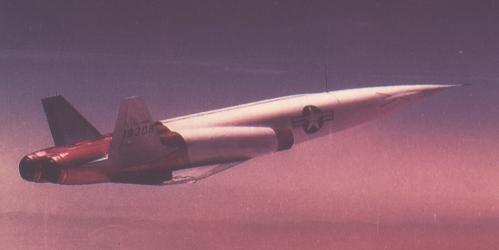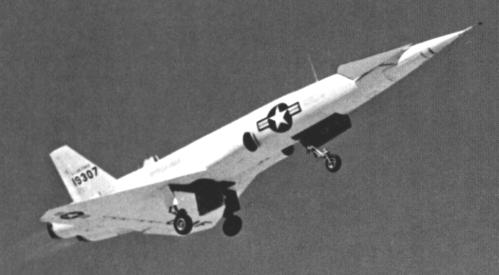North American X-10 (original) (raw)
North American RTV-A-5/X-10
In 1946, North American began the development of a long-range supersonic surface-to-surface cruise missile. This development effort eventually led to the SM-64 Navaho (q.v. for further details) design, and included a test vehicle to verify the basic aerodynamic and systems design of the Navaho. The test vehicle was ordered asRTV-A-5 in 1950, but was redesignated as X-10 in 1951. The first flight of an X-10 occurred in October 1953.
 |
|---|
| Photo: Rockwell International |
| X-10 |
The X-10 was powered by two Westinghouse XJ40 (later J40) turbojet engines, and took off and landed on a conventional runway. Its all-moving canard and delta-wing configuration was that of the planned SM-64 Navaho cruise stage. The X-10 was equipped with an autopilot for automatic stable flight, and controlled by a radio-command guidance system with an AN/ARW-56 on-board receiver and an AN/ARW-55 transmitter in the ground control station. An AN/APW-11 radar transponder was carried for tracking of the vehicle by the ground control radar. Later X-10 vehicles were also equipped with an N-6 inertial navigation system, which was planned for use by the forthcoming SM-64. The X-10 was a very high performance aircraft, and was for a short time actually the fastest turbojet-powered aircraft flown, reaching Mach 2.05.
 |
|---|
| Photo: National Archives |
| X-10 |
The X-10 flight test program was very successful, and continued through November 1956, when the (significantly less successful) tests of the XSM-64 Navaho began. After the X-10 program was moved from Edwards AFB to Cape Canaveral in 1955, several X-10s were lost in landing accidents, when the vehicle either veered off the landing strip, did not properly extend the prarabrake, or failed to engage the landing barrier. Between September 1958 and January 1959, three surplus X-10s were launched as high-speed, high-altitude target drones, but all these flights ended with the unplanned loss of the vehicle. In the end, of the thirteen X-10s built only a single one survived the whole program.
 |
|---|
| Photo: Gerald Blazer |
| X-10 |
Specifications
Note: Data given by several sources show slight variations. Figures given below may therefore be inaccurate!
Data for X-10:
| Length | Missile: 20.17 m (66 ft 2 in) |
|---|---|
| Wingspan | 8.59 m (28 ft 2 in) |
| Height | 4.50 m (14 ft 9 in) |
| Weight | 19000 kg (42000 lb) |
| Speed | Mach 2.05 |
| Ceiling | 13650 m (44800 ft) |
| Range | 1370 km (850 miles) |
| Propulsion | 2x Westinghouse J40-WE-1 turbojet; 48.4 kN (10900 lb) each |
Main Sources
[1] James N. Gibson: "The Navaho Missile Project", Schiffer Publishing Ltd, 1996
[2] Jay Miller: "The X-Planes, X-1 to X-45", Midland Publishing, 2001
Back to Directory of U.S. Military Rockets and Missiles, Appendix 1
Last Updated: 1 December 2002